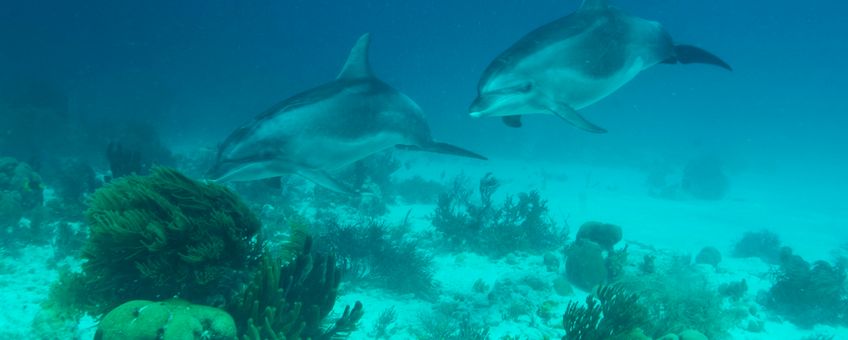
Visitors Yarari Marine Mammal and Shark Sanctuary can help record sightings
Dutch Caribbean Nature Alliance (DCNA), STINAPA BonaireThe online monitoring form developed by STINAPA Bonaire is a simple online sightings reporting form for whales, dolphins, manatees, sharks, rays and large groupers. On the form details on the species, the location and depth of the sighting and the number of animals spotted can be reported, as well as the certainty of the observation. This form is designed for sightings of living animals only. Information on stranded, dead or entangled animals should still be reported directly to the island’s (marine) park organization.
Data gathered through the online monitoring form will provide invaluable information on local population trends and distribution of marine wildlife in the Yarari Sanctuary (pdf: 15.1 MB). At the same time, it builds awareness amongst visitors and the local community. The form has been successfully used in its first month with over 50 sightings recorded already. More than half of the sightings were of sharks, rays and groupers; the rest consisted mostly of dolphins and one sperm whale. Long-term information on the relative abundance and distribution of marine mammals and sharks will provide essential information to help protecting and managing these species, and to help establishing a baseline to measure the success of future conservation activities. DCNA has been calling upon local dive shops on Bonaire to contribute through reporting all their sightings as well. Furthermore, all marine parks within the Dutch Caribbean have been invited to use the online form. Saba Conservation Foundation, STENAPA on St. Eustatius and St. Maarten Nature Foundation already have their own sighting forms and system in place. During this month, dive schools on St. Eustatius reported humpback whale sightings to STENAPA; these data will be added to the database eventually.
There has been a significant push in the past decade to collect data on the biodiversity of the Dutch Caribbean to improve the effectiveness of conservation measures. While a number of research projects have been led and completed by teams of scientists, such as the expeditions to the Saba Bank, gathering long-term data on marine life is no easy feat. Citizen science, whereby the public participates in scientific research through the collection and sharing of data, has proven to be a real asset to the monitoring of marine mammals and large predators such as sharks. The SharksCount program by SharkSavers and WildAid and REEF for example, has had great success in engaging the general public in shark and fish monitoring while gathering important data on local shark abundance and diversity.
Text: Florence Depondt, Tineke van Bussel, Olivier Kramer, DCNA
Photo: Rudy van Geldere
